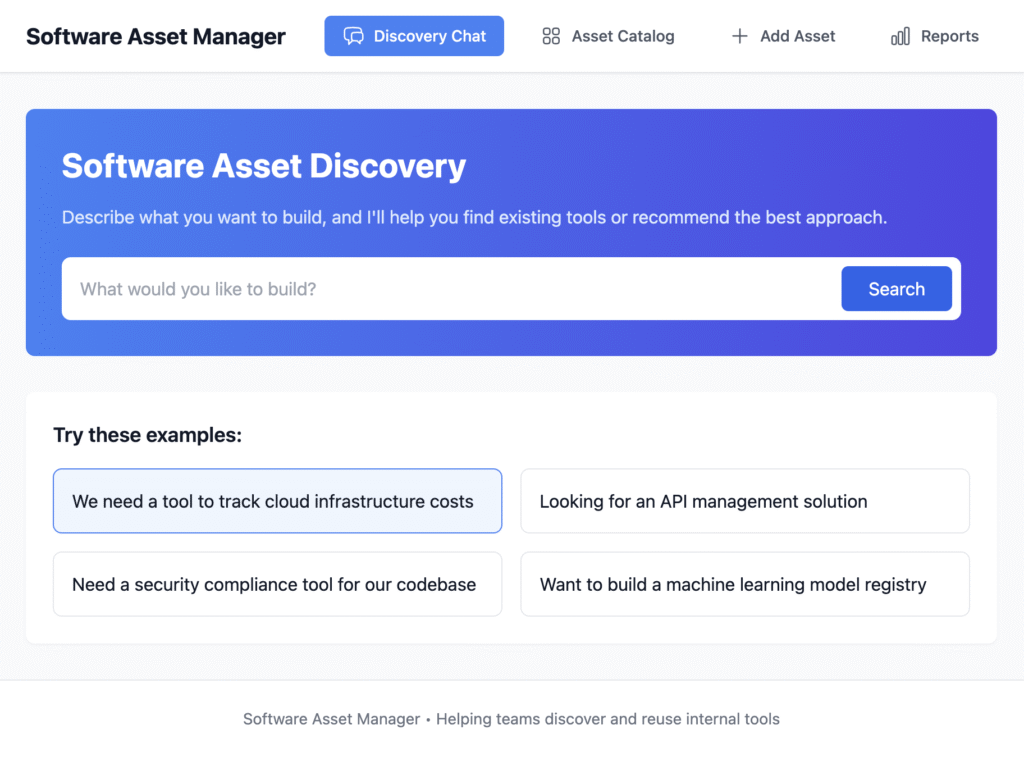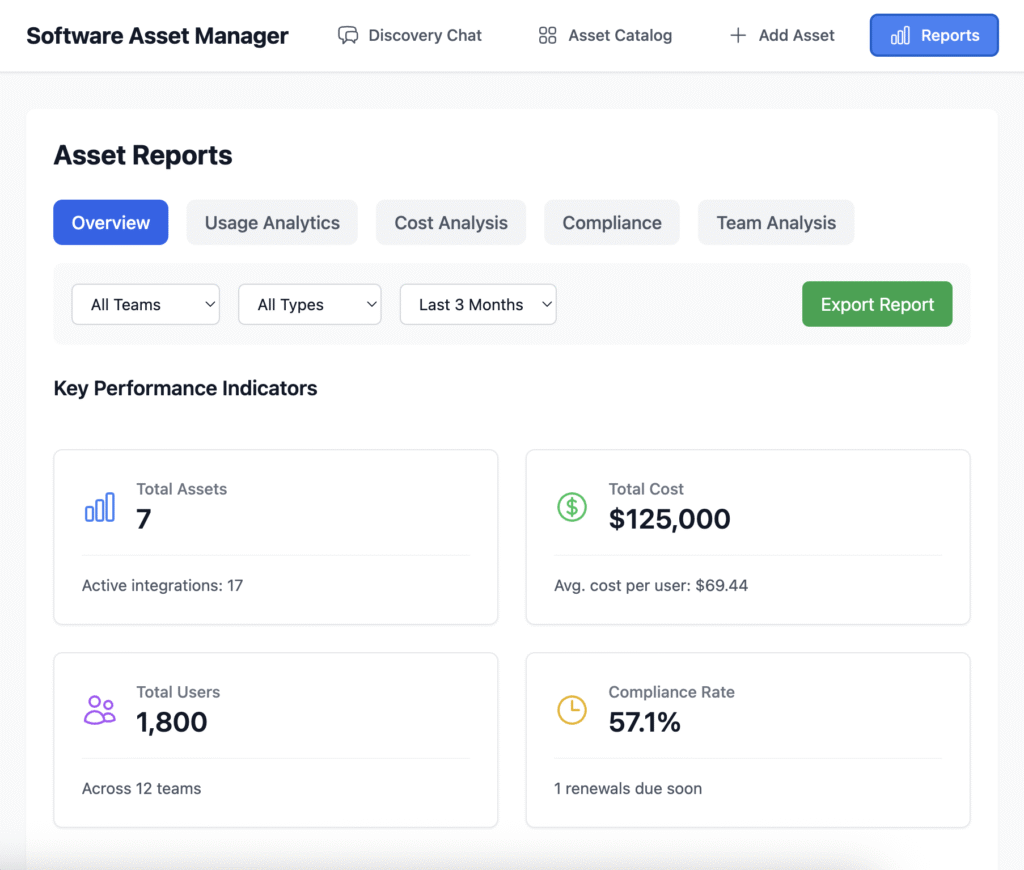Managing software tools, licenses, and digital assets across a large organization is no small feat. From approval bottlenecks to underused tools and bloated software spend, the challenges pile up quickly. That’s where Asset Manager comes in — a non-ordinary asset tracking and decision tool built for modern enterprises that demand clarity, efficiency, and strategic insight.

A Three-Ladder Access Model for Everyone in the Organization
Unlike traditional asset tracking tools, Asset Manager is designed around three distinct user levels, ensuring that everyone — from executives to interns — gets exactly what they need:
- Top-Level Management can make informed decisions based on high-level overviews of asset usage, compliance, and cost-benefit analysis.
- Mid-Level Managers gain control over their department’s tools, license allocations, and performance monitoring.
- All Employees can simply search, find, and use the right tools without wasting time chasing approvals or sending multiple emails.
This hierarchy reduces friction, accelerates productivity, and ensures compliance and cost-efficiency at scale.
Powerful Search Interface & Deep Asset Catalog
At the heart of Asset Manager is an intuitive search interface that acts like a smart assistant for the whole organization. Users can:
- Search for tools by task or problem (“How do I design a wireframe?” → use Figma)
- Explore a detailed asset catalog, where each asset has:
- Usage guides and documentation
- Licensing and pricing info
- Compliance and version tracking
- Access rights and point-of-contact
Everything an employee or manager needs is available in one place.
AI-Powered Recommendations and Planning
What sets Asset Manager apart is its AI integration, which powers its advanced recommendation and planning capabilities.
Need to solve a specific task or business problem? Ask Asset Manager, and the AI will:
- Suggest existing tools within your organization
- Evaluate available external solutions in the market
- Recommend whether to buy, build, or integrate
- Generate a basic implementation plan, including:
- Tools required
- Estimated cost
- Timeline and technical effort
The AI helps teams avoid redundant purchases, identify the best-fit tools faster, and even forecast the impact of new solutions — all without needing to consult multiple departments.
Built-In Reporting That Prevents Waste
Asset Manager isn’t just about finding the right tool — it’s also about knowing when not to buy or renew one. Its reporting suite uncovers:
- Redundant tools across teams or departments
- Overpaid licenses or underused subscriptions
- Utilization rates that highlight what’s working and what’s not
- Cost optimization suggestions based on real usage data

With these insights, organizations can trim unnecessary expenses and reallocate resources where they deliver the most value.
Final Thoughts
Asset Manager is more than just an inventory system. It’s a productivity enabler, a budget optimizer, and a strategic decision assistant powered by AI. With its smart access model, detailed asset catalog, and intelligent recommendation engine, Asset Manager helps teams move faster, spend smarter, and innovate with confidence.
Whether you’re streamlining internal workflows or planning your next big project, Asset Manager ensures you’ve got the right tools — and the right insights — at your fingertips.
Updates: July 31, 2025
What’s New in Asset Manager
We’ve recently introduced several key enhancements to improve usability, automation, and strategic insights:
- Task Guidance via Asset Utilization:
The initial search functionality now includes an option to explore how to accomplish specific tasks using available assets. This empowers users to discover practical applications of their resources right from the search interface. - Task Automation Recommendations:
Building on that, we’ve also introduced automated task suggestions, helping organizations identify and streamline repetitive processes directly through the Asset Manager. - Expanded Reporting Capabilities:
A brand-new reporting section has been added to support deeper analysis and strategic planning. This includes reports for:- Redundancy
- Return on Investment (ROI)
- Data Backup Readiness
- Risk Assessment
…and more.
These updates are designed to support organizations in making digital transformation as seamless as possible—offering smarter, more actionable insights and easier automation across the board.
